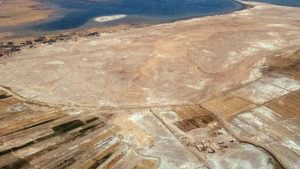NASA’s Curiosity and Perseverance Rovers Must Dig Deeper for Signs of Ancient Life on Mars, Say Researchers
NASA’s Curiosity and Perseverance rovers sent by the space agency to explore Mars have been able to detect organic matter in the past. While this isn’t considered concrete evidence to prove that life once thrived on the Red Planet, researchers have concluded that rovers might have to dig a bit deeper to unearth the signs of ancient life, as part of a new NASA laborato…

Researchers have discovered that NASA’s Curiosity and Perseverance rovers will have to dig a bit deeper on Mars in order to unearth signs of ancient life. The rovers, which were designed to explore Mars, have previously detected organic matter, which is not regarded as ample proof that life once thrived on the Red Planet. The researchers believe that finding amino acid traces on Mars could be a potential sign of ancient life that could have existed on the planet billions of years ago.
Both rovers sent by NASA to explore Mars have been able to detect organic matter, not considered concrete evidence that life once thrived on the planet. Scientists have noted that while amino acids can be created by both life and non-biological chemistry, finding its traces on Mars can be a potential sign of ancient life. Amino acids are used by terrestrial life to build proteins which are essential for making enzymes. These enzymes in turn regulate or speed up the chemical reactions and make structures.
Now, through a NASA laboratory experiment, researchers have concluded that rovers might have to dig a bit deeper to unearth proof that life may have existed in the past on the Red Planet.
Alexander Pavlov of NASA’s Goddard Space Flight Center in Greenbelt, Maryland, and the lead author of the study, said, “Our results suggest that amino acids are destroyed by cosmic rays in the Martian surface rocks and regolith (the top layer of loose, solid material above a planet’s bedrock) at much faster rates than previously thought.”
Pavlov added that the current Mars rover missions drill down to about five centimetres on the surface of the planet. He said at that depth the amino acids can get destroyed completely in just 20 million years. This period is relatively small, as scientists are searching for traces of life that existed some billions of years ago.
The study, published in Astrobiology, suggests a new method for missions that dig at shallow depths. “Missions with shallow drill sampling have to seek recently exposed outcrops – such as recent microcraters with ages less than 10 million years or the material ejected from such craters,” said Pavlov.
Organic molecules get destroyed by cosmic rays that are high-energy particles resulting from powerful events on the Sun or in deep space. While Earth gets protection from these rays due to its thick atmosphere and magnetic fields, this isn’t the case with Mars. The Red Planet a similar “shield”, but eventually lost its protection as the planet aged.
For the experiment, the team of researchers mixed certain types of amino acids like hydrated silica and perchlorate and tried to simulate the conditions in Martian soil. Samples were sealed in a test tube under conditions similar to that on Mars. Then, those samples were exposed to gamma radiation to replicate the effect of cosmic rays.
“Our work is the first comprehensive study where the destruction (radiolysis) of a broad range of amino acids was studied under a variety of Mars-relevant factors (temperature, water content, perchlorate abundance) and the rates of radiolysis were compared,” said Pavlov.
He added that the addition of silicates and especially silicates with perchlorates resulted in an increased rate of destruction of the amino acids.




